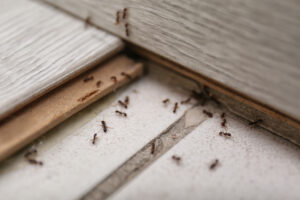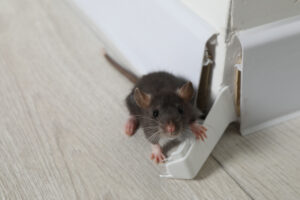The climate of Colorado profoundly influences insect behavior, distribution, and life cycles due to the state’s diverse geography, encompassing varying elevations and temperatures. Here’s an exploration of how the Colorado climate impacts insects:
Temperature Variations: Colorado’s high elevation results in drastic temperature fluctuations between day and night. Insects, being ectothermic, rely on the surrounding environment for body temperature regulation. For instance, during warm days, insects like butterflies and bees become more active, while they slow down during cooler nights to conserve energy.
Seasonal Cycles: The distinct seasons in Colorado affect insect life cycles. As temperatures rise in spring and summer, insects like mosquitoes and flies thrive and multiply. Conversely, colder months induce diapause or hibernation in some insects like ladybugs, as they enter a dormant state to survive the winter.
Example: In spring, Colorado’s bee populations increase, buzzing around flowering plants and aiding in pollination.

Mountain weather keeps different insects close
Precipitation and Moisture: Colorado experiences varying precipitation patterns across regions, affecting insect habitats and food sources. Insects rely on moisture for survival and reproduction, making them sensitive to changes in precipitation levels.
Example: Increased rainfall may lead to a surge in mosquito populations, which thrive in standing water.
Altitude and Habitat: Colorado’s diverse elevations create distinct habitats for insects. For example, grasshoppers and crickets are commonly found in the lowlands, while alpine butterflies and moths dominate the mountainous regions.
Example: The Rocky Mountain region provides a suitable habitat for alpine butterflies, exhibiting unique adaptations to survive at high elevations.
Plant Life and Food Sources: Native plants in Colorado play a crucial role in supporting insect populations by providing nectar, pollen, and hosting their eggs and larvae. Changes in vegetation, due to factors like climate change or urbanization, can disrupt these interactions.
Example: Monarch butterflies rely on milkweed plants as their host for egg-laying and food for their caterpillars during their migration through Colorado.
Invasive Species: The changing climate can facilitate the introduction and spread of invasive insect species. Warmer temperatures and altered precipitation patterns may create more favorable conditions for pests like the emerald ash borer, posing threats to native ecosystems and trees.
Example: The emerald ash borer has made its way into Colorado, devastating ash tree populations across the state.
Overwintering Strategies: To endure harsh winters, Colorado insects have evolved various overwintering strategies. Some, like ladybugs, seek refuge in homes and buildings, while others, like monarch butterflies, migrate to warmer climates.
Example: Swarms of ladybugs gathering in homes during winter months to seek warmth and shelter.
Phenological Shifts: Climate-driven changes in seasonal events, like early springs or delayed winters, can impact insect emergence, mating, and migration patterns.
Example: Butterflies may emerge earlier in the spring, aligning their life cycle with blooming plants and increasing their chances of survival.




